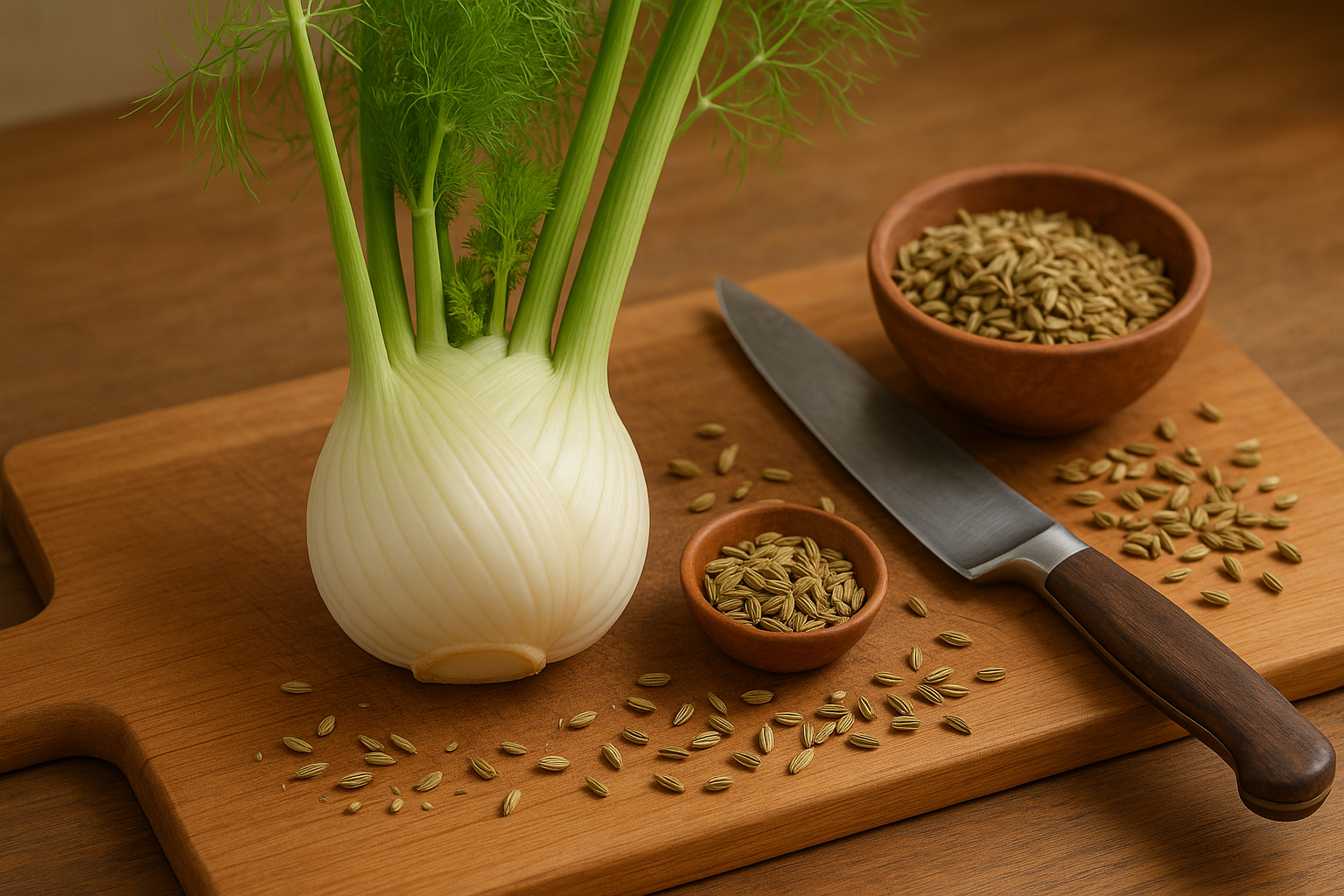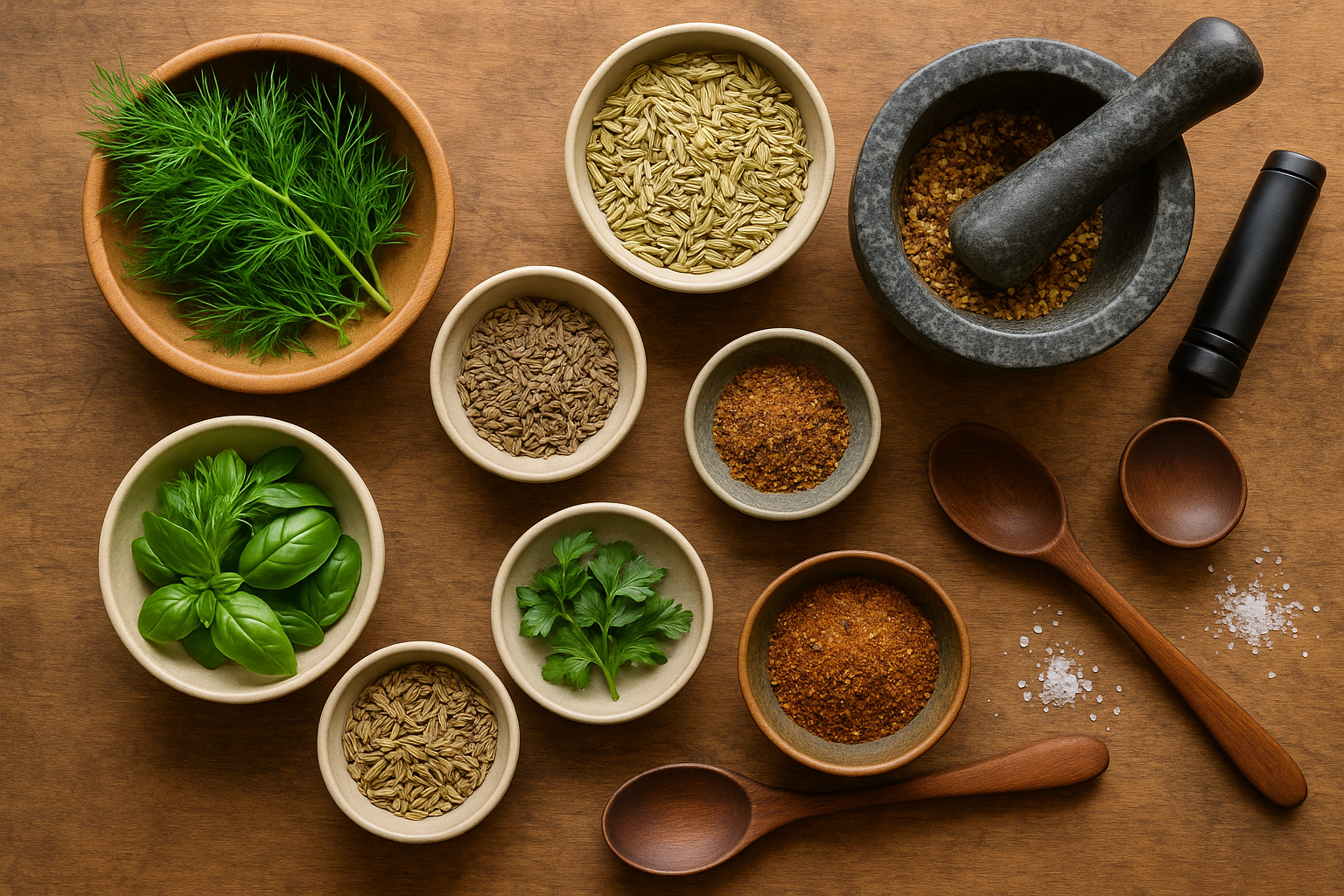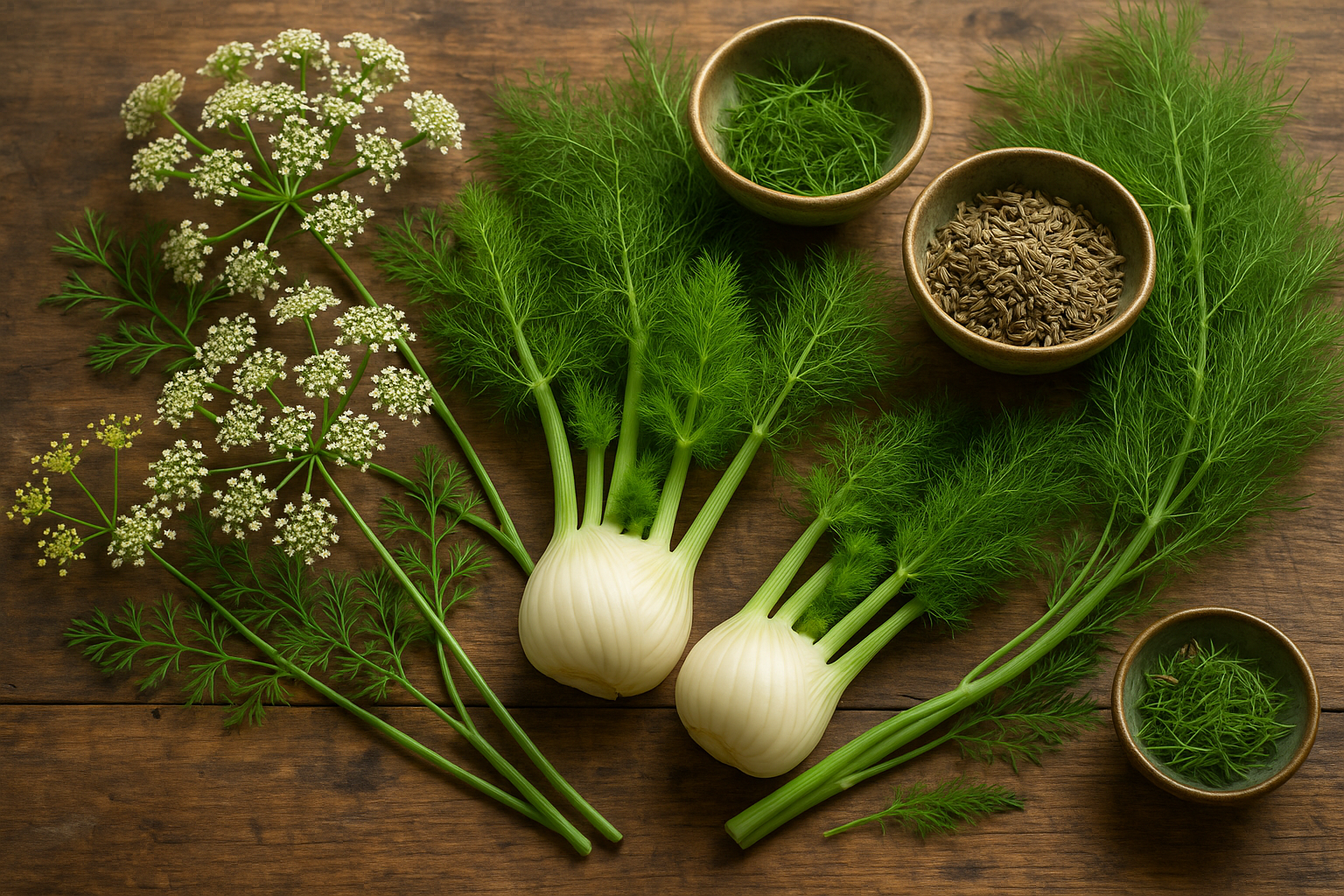Introduction
Fennel vs anise vs dill: if you’ve ever mixed up these three in a recipe, you’re definitely not alone. These fragrant herbs and spices look alike at first glance and even share a hint of licorice-like flavor, which can make things confusing in the kitchen. But understanding the difference between fennel, anise, and dill is key to getting the right flavor balance in your cooking—and avoiding some surprising taste results!
In this article, we’ll break down the main differences and similarities between fennel, anise, and dill, from their appearance and taste profiles to how and where they’re best used. We’ll also give you easy ways to tell them apart, plus tips from seasoned cooks so you always pick the right one, whether you’re making a fresh salad, seasoning a roast, or brewing an herbal tea.
What Is Fennel?

Fennel is a versatile herb and vegetable prized both in the kitchen and in herbal medicine. Belonging to the carrot family (Apiaceae), fennel features feathery, dill-like fronds, slender green stalks, and a crisp, pale-green bulb that swells at its base.
The entire plant is edible, but it’s the bulb that stands out for its sweet, mild flavor, often described as subtly licorice-like with a hint of anise. Fennel’s seeds are commonly used as a spice, lending their aromatic, slightly sweet character to sausages, baked goods, and spice blends.
In cooking, raw fennel adds a refreshing crunch to salads, while roasting or grilling the bulb brings out its natural sweetness, making it perfect for pairing with meats or other vegetables. The fronds can be snipped over soups and seafood for a fresh, herbal accent.
Medicinally, fennel has a long tradition of use—fennel tea, for example, is popular for soothing digestive discomfort and easing bloating. Its unique combination of flavor, texture, and health benefits make fennel a standout ingredient, whether you’re adding it thinly sliced to a citrus salad or steeping the seeds to make a calming after-dinner tea.
What Is Anise?
Anise is a small annual herb, scientifically known as Pimpinella anisum, native to the eastern Mediterranean and Southwest Asia. It’s easily recognized by its feathery green leaves and umbrella-like clusters of tiny white flowers, which eventually produce the plant’s prized seeds.
While anise is often confused with fennel due to their similar licorice-like aroma, they are actually different plants. Anise is bushier and has smaller, more potent seeds, whereas fennel has a bulbous base and a milder, sweeter taste.
The flavor of anise seeds is sweet and strongly reminiscent of black licorice, with a warm, slightly spicy note that shines in breads, cookies, and drinks like French pastis or Greek ouzo. Unlike fennel, which is often eaten as a vegetable, it’s the seeds of anise that find their way into spice jars—used whole or ground.
You’ll notice anise in Mediterranean baking, Indian curries, and Mexican desserts, showing how its popularity spans continents. When buying anise, choose whole seeds for a longer shelf life—crush or grind just before using for the freshest flavor boost.
Don’t confuse star anise, a different spice with a similar scent; true anise seeds are smaller, oval, and grayish-green.
What Is Dill?
Dill is a feathery green herb with delicate, thread-like leaves and a fresh, grassy aroma. It belongs to the Apiaceae family, the same botanical group as parsley, carrot, and celery. Dill stands out in the kitchen for its light, slightly tangy flavor with subtle hints of anise and lemon, but it’s far milder than either fennel or anise.
While fennel has a pronounced licorice taste and thick, bulbous stems, and anise is mostly used for its potent seeds in sweet or spicy dishes, dill offers a gentler, herbal note that brightens savory foods without overpowering them. In the culinary world, dill is essential for pickling—its leafy tops and seeds lend that classic, sharp tang to pickles and cured fish like gravlax.
Fresh dill leaves are also a favorite in salads, creamy dressings, and yogurt sauces, bringing a burst of green flavor to potato dishes, eggs, and roasted vegetables. Unlike the bolder tastes of fennel and anise, dill can be generously added just before serving, preserving its fresh character. For best results, use dill at the end of cooking or raw, as heat tends to mute its signature flavor.
Similarities Between Fennel, Anise, and Dill
Fennel, anise, and dill are often grouped together not just for their subtle, aromatic flavors but also because they all belong to the Apiaceae family, sometimes called the parsley or carrot family. This connection means they share several botanical traits, like feather-light, finely divided leaves and umbrella-shaped clusters of tiny flowers.
In the kitchen and at the market, it’s easy to see why these herbs might get confused—each has overlapping flavors that lean herbaceous and sweet, with gentle licorice or anise-like notes.
For example, fennel bulbs offer a crisp bite with mild licorice undertones, while anise seeds are prized in baking for their sharper, sweet-licorice taste. Dill is a bit different, with a tangier edge, but still retains a hint of that characteristic sweetness.
Because their feathery greens can look so similar, it’s common to mix them up in recipes or while shopping—leading to unexpected flavor twists in salads, seafood dishes, and even teas.
To avoid confusion, check whether your recipe calls for seeds, bulbs, or leaves, and note each herb’s distinctive aroma before using it. This way, you’ll always get the flavor you’re aiming for.
Key Differences
When comparing herbs and spices like basil, parsley, cilantro, and dill, the differences in flavor, uses, and appearance can be striking. Basil’s sweet, peppery flavor shines in Italian dishes like pesto and caprese salads, while parsley offers a fresh, mildly bitter taste ideal for brightening soups, sauces, and garnishes. Cilantro stands out with its bold, citrusy bite—essential in Mexican salsas and many Asian cuisines. Dill, with its delicate, grassy, tangy notes, pairs perfectly with fish, potatoes, and pickles.
In terms of appearance, basil leaves are large, smooth, and glossy; parsley comes in curly and flat-leaf varieties; cilantro has delicate, jagged leaves; and dill features feathery, thread-like fronds. When shopping, sniff the leaves—basil is sweet, cilantro has a soapy aroma, and dill smells grassy and fresh. If growing at home, notice the plant height: dill grows tall with yellow flower heads, basil has bushy, upright stems, while cilantro and parsley stay lower to the ground.
Practical tip: keep a photo reference on your phone when shopping, and always check the label—herbs can look deceptively similar but offer totally different flavors to your dishes. For a quick comparison:
- Basil – Sweet/spicy | Italian | Smooth large leaves
- Parsley – Fresh/mild | Garnish, soups | Curly/flat leaves
- Cilantro – Citrusy | Mexican/Asian | Jagged leaves
- Dill – Tangy/grassy | Pickles, fish | Feathery fronds
Culinary Substitutions and Cooking Tips

When you realize you’re out of a specific herb or spice mid-recipe, knowing what to swap and when to hold back can save dinner. Mild herbs like parsley, cilantro, or basil can often be substituted for one another in garnishes and salads—though keep in mind that cilantro’s distinct flavor may not suit everyone, so start with half the suggested amount.
Hardier herbs like thyme and rosemary bring different notes: thyme is earthier and more versatile for soups and meats; rosemary is piney and works best with roasted potatoes or chicken—don’t use them interchangeably in delicate dishes.
For warming spices, cinnamon and allspice can substitute for each other in baked goods if needed, but nutmeg’s sharper taste usually requires a lighter hand—try half the amount if swapping it in. Cumin and coriander are both earthy, but cumin’s smokiness is better in chili or tacos, while coriander’s citrus undertone pops in curries or vegetable dishes.
To enhance flavor, toast whole spices briefly in a dry pan before grinding, or crush fresh herbs with a pinch of salt to release essential oils. Combine bay leaves and thyme for stews, basil and oregano for Italian sauces, or ginger and garlic for stir-fries.
Don’t swap dried for fresh at a one-to-one ratio; use one-third the amount of dried, as their flavor is more concentrated. Trust your taste buds—add herbs and spices slowly, tasting as you go, to make the most of every substitution.
Conclusion
When choosing the right herb for your needs, remember that fennel offers a sweet, licorice-like flavor and works well in both savory and sweet dishes. Anise is more intense, making it perfect for baked goods and beverages, while dill is fresh and grassy—ideal for seafood and salads. Don’t be afraid to experiment—taste a pinch of each herb on its own to get a sense of its unique character.
As a next step, try making a citrusy fennel salad, classic anise cookies, or dill-topped roasted potatoes to discover which herb best suits your palate and cooking style.
